|
|
|
|
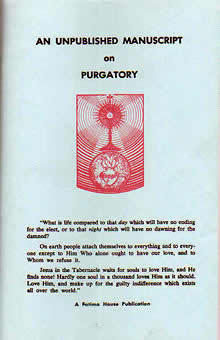 Unpublished
Manuscript on Purgatory
Revelations from a deceased nun in the 18th century to a living nun about
purgatory -- what's it's like, its levels and sufferings, astonishing and
credible detail. Imprimatur. Highly, highly recommended. This much we can say:
it is a revelation that will affect the way you view the rest of your life.
CLICK HERE Unpublished
Manuscript on Purgatory
Revelations from a deceased nun in the 18th century to a living nun about
purgatory -- what's it's like, its levels and sufferings, astonishing and
credible detail. Imprimatur. Highly, highly recommended. This much we can say:
it is a revelation that will affect the way you view the rest of your life.
CLICK HERE
|
|

__________________________________________________
STATUE IN LOUISIANA MAY SOLVE RIDDLE OF WHY
ALLEGED 'WEEPING' RESEMBLES BLOOD
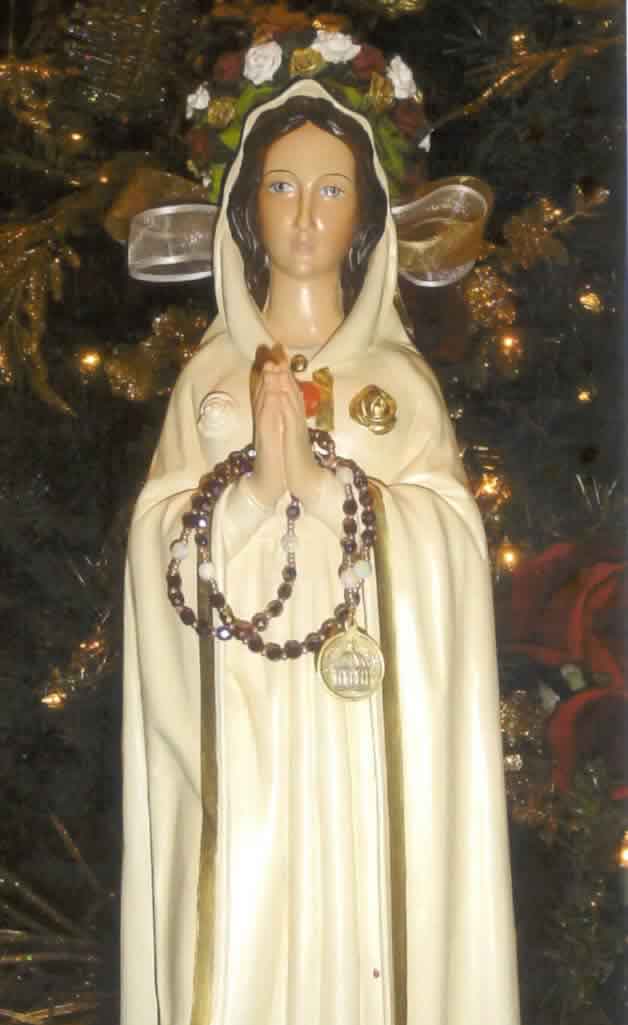 Has
a little mystery been solved?
Has
a little mystery been solved?
For years aficionados of mysticism
have debated, or at least wondered about, the significance of reputedly weeping
statues.
When it seems legitimate that a
statue is miraculously lachrymating (as has occurred so many times in recent
decades), are the tears simply the sign of a general sadness in Heaven for the
sins in the
world?
And what about oil -- when an
oily substance flows from a statue. That too has been widely reported. Why
oil? Does it have anything to do with the healing properties of balm?
And what about statues that seemed
to exude a combination: oily tears?
The most startling statue
emanation has been red liquid that resembles blood -- and in a few cases has
tested as exactly that (in the rare instances when formal examinations occur).
Such occurred in Italy with a statue brought back from Medjugorje -- a
miracle approved by the local bishop under the direct guidance of the Vatican.
Blood?
In certain ways, it seems grotesque
-- and in some instance has looked so unsightly that it may be wondered if the evil
one was involved. This has seemed to occur from Korea to (once more) Italy.
What about other instances? What
about when a statue exudes a red substance that doesn't evoke any form of
revulsion but remains mysterious?
 The
guess has been that such a symbol may represent war, crime, or abortion --
and perhaps all three: sins that cause actual human harm. If a statue in Louisiana is an indication, the mystery
may be solved.
The
guess has been that such a symbol may represent war, crime, or abortion --
and perhaps all three: sins that cause actual human harm. If a statue in Louisiana is an indication, the mystery
may be solved.
In the town of New Iberia,
Louisiana, a "Rosa Mystica"
statue fashioned after a controversial apparition in Italy exuded a spot of
red [left] that resembles an unborn child.
This would seem to validate the
notion that red
substances on statues relates more than anything to the ongoing
slaughter of the unborn.
While the apparition upon which
the statue is based, in a town
called Montichiari, was rejected by the Church (and quite pointedly, with a
proclamation from the bishop posted in the front vestibule), the Church has
allowed a devotion based on a statue derived from the apparition to continue,
and hundreds around the world have claimed that the statues inspired by that
vision weep. Miracles in association with the Rosa Mystica have
been recorded in Belgium, Ireland, Egypt, Colombia, Italy, the U.S., and
elsewhere.
In Louisiana, the case involves a former high school
teacher named Lisa Bellingham who has had three such statues and reports
exudations with all of them.
It started, she tells us, when she
requested a Rosa Mystica in 2004 from a ministry in Germany after her young son was indicating a call to the priesthood.
The German apostolate sent her not one but
eventually three statues -- two of them 24 inches in height and a third closer to
three feet.
The statues, asserts Mrs.
Bellingham, have wept on many occasions, especially when faithful are praying in
front of them. In one case, she says, the statue exuded while they were
imploring God's help and the intercession of Mary for a friend
who was diagnosed as having two cancerous lung tumors.
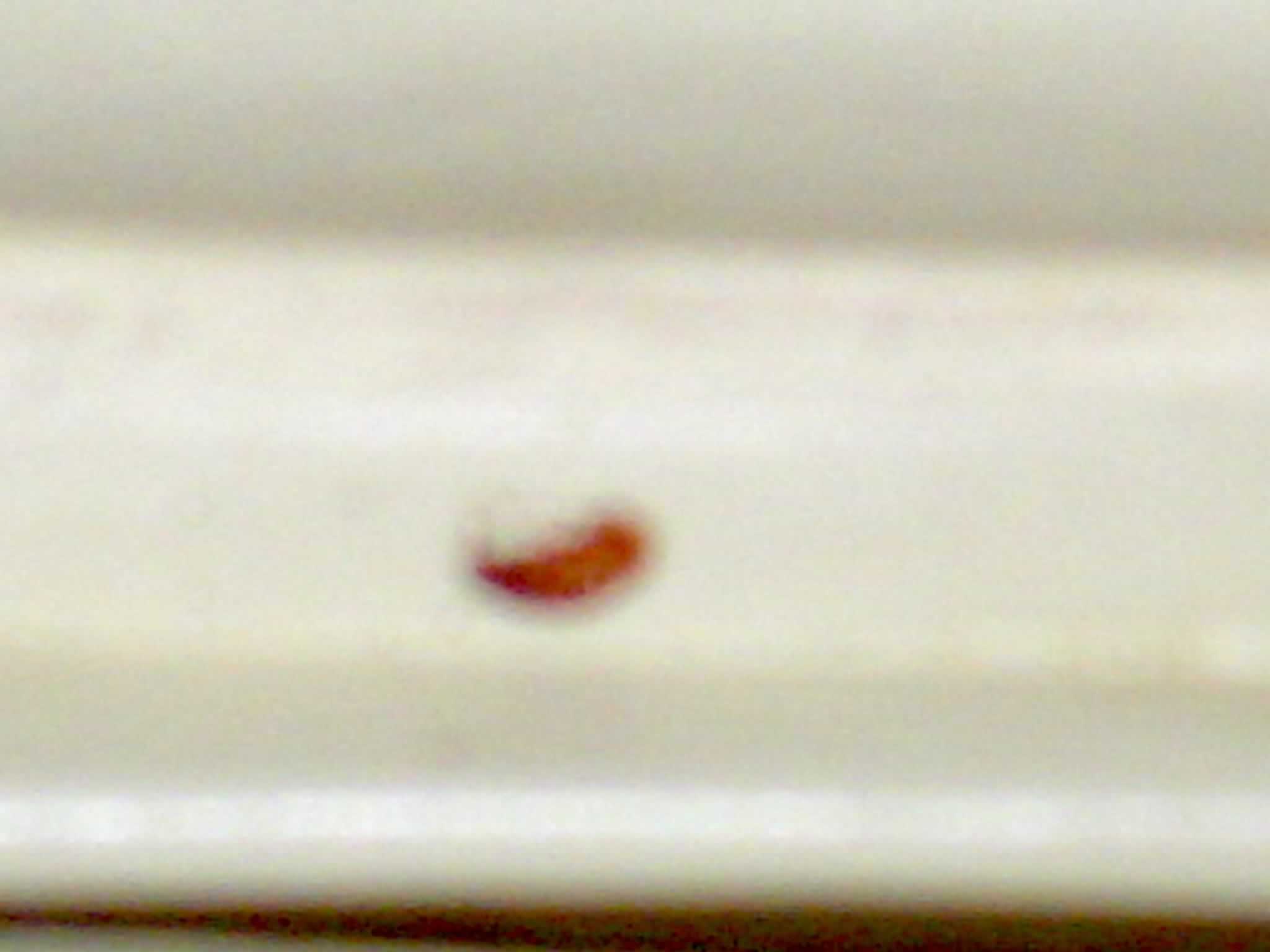 "She was told she needed to have surgery,"
says Lisa. "She opted to have it here in New
Iberia and during surgery I brought Rosa Mystica into the family room and it
wept during the entire surgery.
"She was told she needed to have surgery,"
says Lisa. "She opted to have it here in New
Iberia and during surgery I brought Rosa Mystica into the family room and it
wept during the entire surgery.
"Once surgery was over, the doctor came to the room
and said that he could not call himself a particularly religious man but that
the surgery went very well and that when he went in there were no tumors."
The third statue has become a pilgrim
statue that Mrs. Bellingham has even taken to a local high school, where it
allegedly wept in front of a graduating class.
There were other "miracles." At one point, the
robe on one of the statues turned a bluish color. But most astonishing was the
event of January 1, 2005, when the speck of red appeared on the first statue.
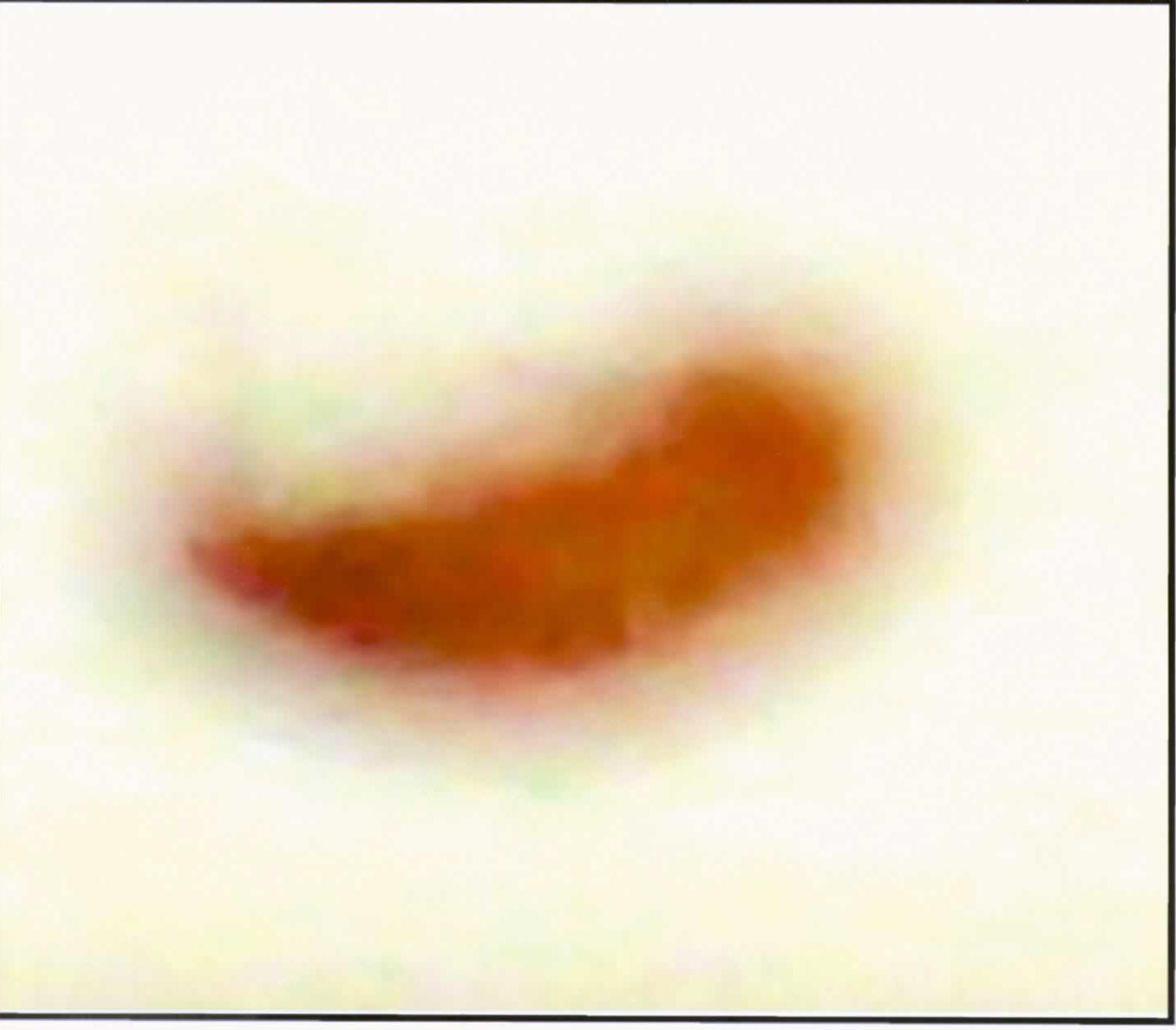 While
most photos don't do it justice -- especially ones that have to be sized for
the internet -- large blow-ups with adjusted contrast show what certainly
seems like the silhouette of an unborn child.
While
most photos don't do it justice -- especially ones that have to be sized for
the internet -- large blow-ups with adjusted contrast show what certainly
seems like the silhouette of an unborn child.
So striking is the
impression (in those blow-ups, which unfortunately we can not present) that a priest she consulted asked to photograph it (although
he took the Church's cautious, somewhat aloof stance toward it), Lisa's spiritual director hung it on his wall, and it was used in a pro-life parade right
behind Bishop Michael Jarrell.
"I immediately knew it meant pro-life -- that
even though it was around Christmas it didn't mean the Infant Jesus, but was a
pro-life message," says Lisa.
It was the one and only time that the exudation
was red.
Moreover, there may be a message in the fact
that -- for those to whom it represents an unborn child -- the portrayal is a fetus
in one of the earliest stages of pregnancy.
Has a mystery finally been solved?
Around the world, when statues weep not just
"tears," not just oil, but blood, have we finally been shown that it is indeed the
Blessed Mother weeping over the tragedy (and holocaust) of abortion?
[resources:
The Final Hour]
[Lisa can be reached by e-mailing her
here]
[see also:
'Changing statues': illusion or grace?]
E-mail this link directly
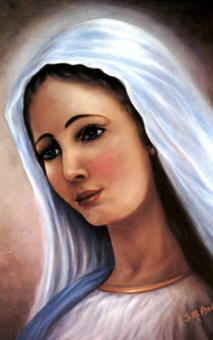
Return
to home page
 Unpublished
Manuscript on Purgatory
Revelations from a deceased nun in the 18th century to a living nun about
purgatory -- what's it's like, its levels and sufferings, astonishing and
credible detail. Imprimatur. Highly, highly recommended. This much we can say:
it is a revelation that will affect the way you view the rest of your life.
CLICK HERE
Unpublished
Manuscript on Purgatory
Revelations from a deceased nun in the 18th century to a living nun about
purgatory -- what's it's like, its levels and sufferings, astonishing and
credible detail. Imprimatur. Highly, highly recommended. This much we can say:
it is a revelation that will affect the way you view the rest of your life.
CLICK HERE Has
a little mystery been solved?
Has
a little mystery been solved? The
guess has been that such a symbol may represent war, crime, or abortion --
and perhaps all three: sins that cause actual human harm. If a statue in Louisiana is an indication, the mystery
may be solved.
The
guess has been that such a symbol may represent war, crime, or abortion --
and perhaps all three: sins that cause actual human harm. If a statue in Louisiana is an indication, the mystery
may be solved. "She was told she needed to have surgery,"
says Lisa. "She opted to have it here in New
Iberia and during surgery I brought Rosa Mystica into the family room and it
wept during the entire surgery.
"She was told she needed to have surgery,"
says Lisa. "She opted to have it here in New
Iberia and during surgery I brought Rosa Mystica into the family room and it
wept during the entire surgery.  While
most photos don't do it justice -- especially ones that have to be sized for
the internet -- large blow-ups with adjusted contrast show what certainly
seems like the silhouette of an unborn child.
While
most photos don't do it justice -- especially ones that have to be sized for
the internet -- large blow-ups with adjusted contrast show what certainly
seems like the silhouette of an unborn child.